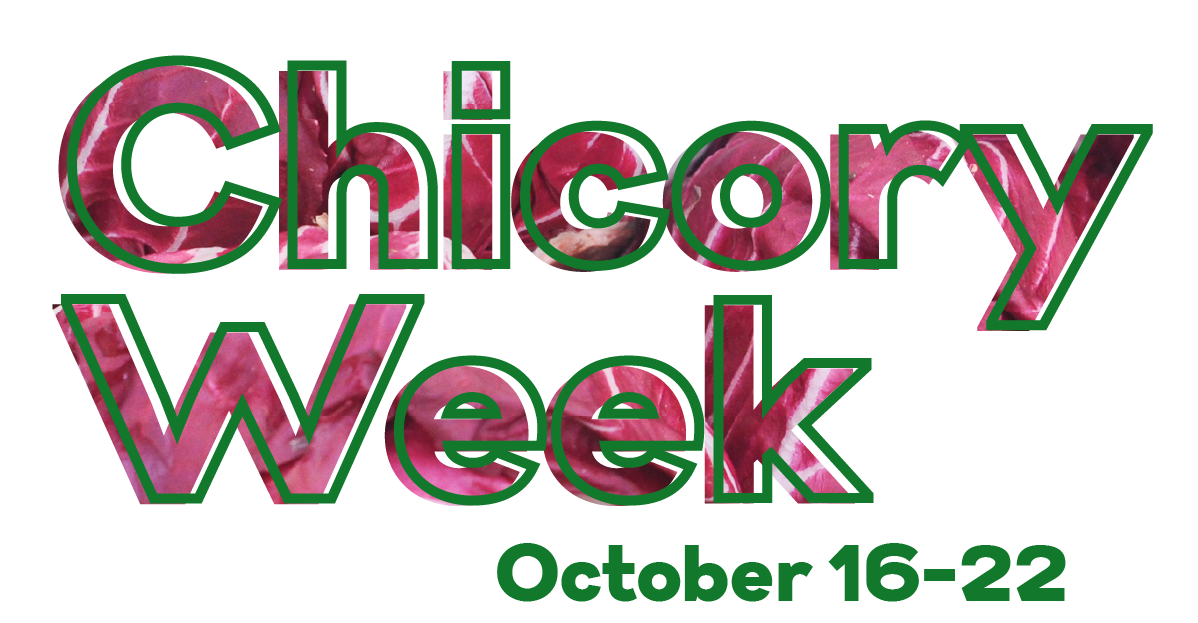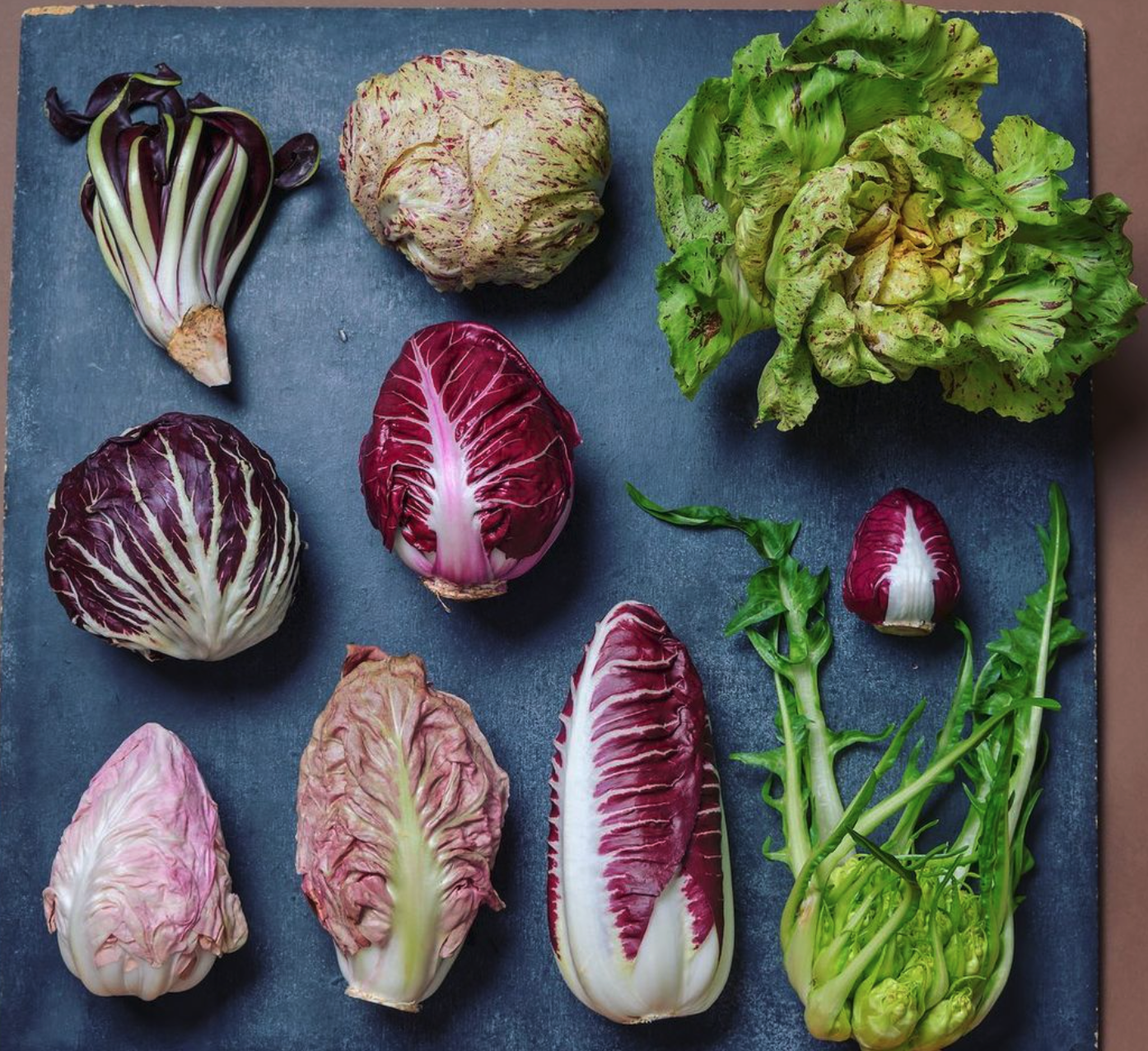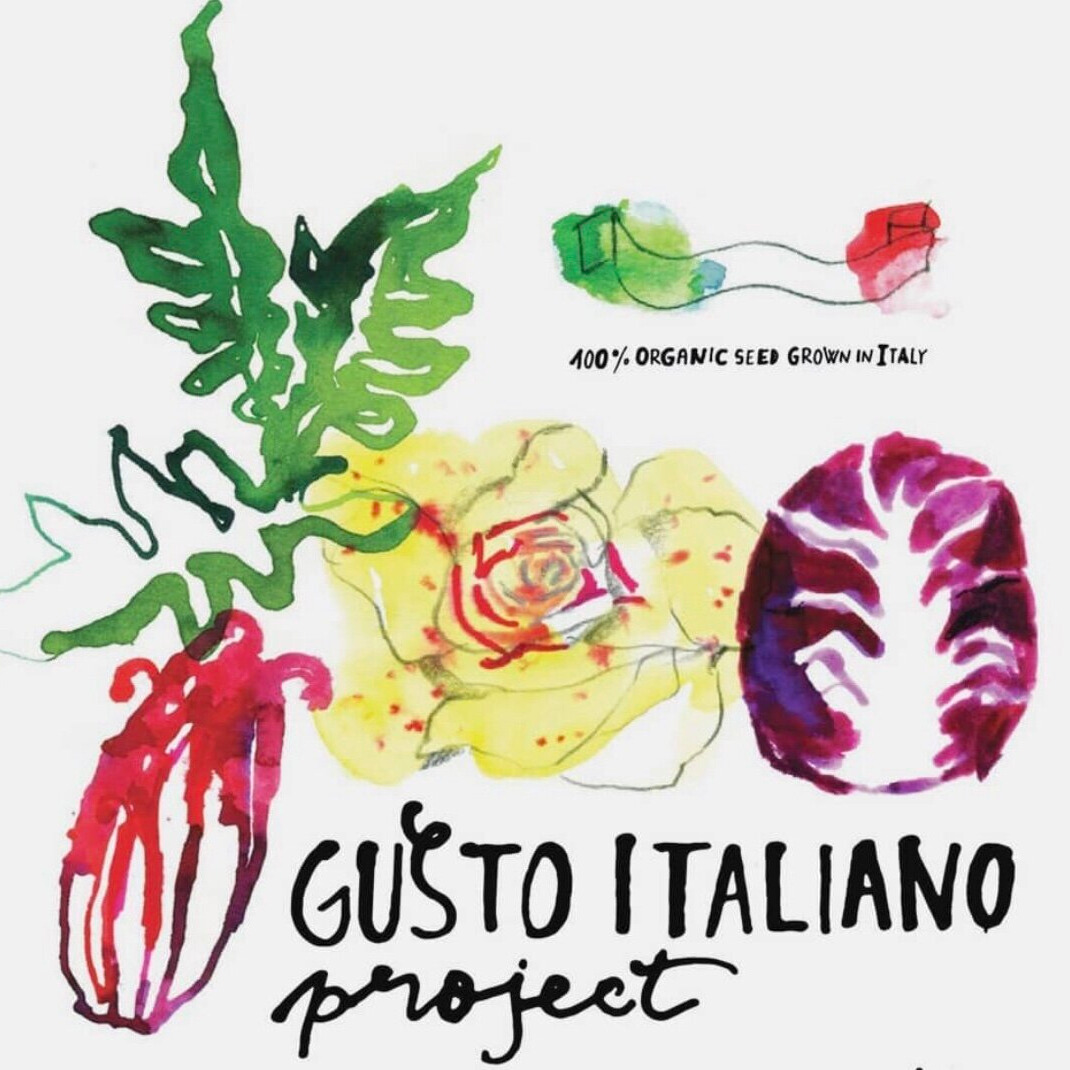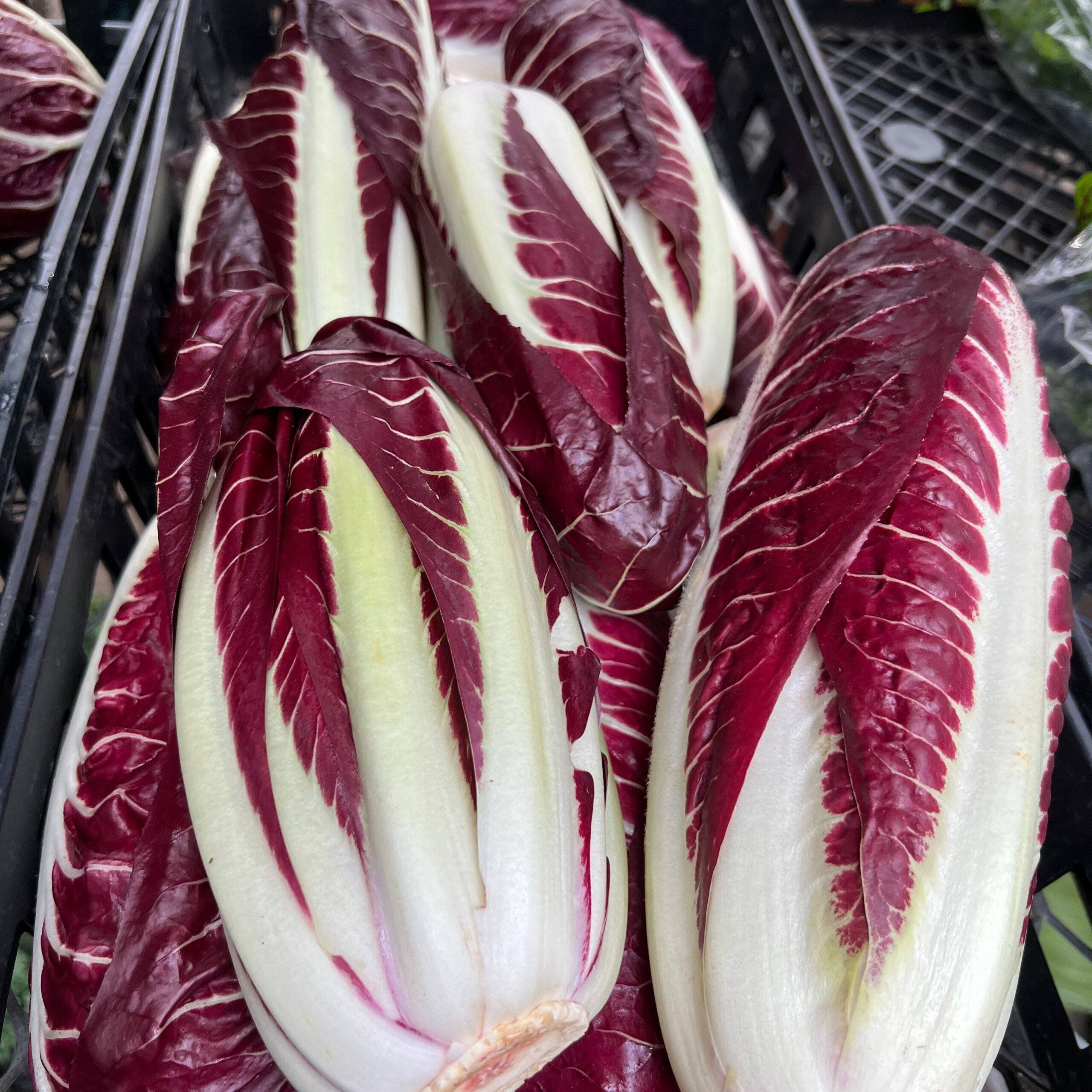By Mara Welton, Director of Programs

I have long loved chicories — those bitter greens, reds and pinks that grace your salad mixes, often incognito. Beautiful radicchio leaves, oft mistaken for red cabbage, their maroon petals giving nutritional heft to an otherwise anemic “spring mix.”
Escarole was my “gateway chicory.” I needed to be schooled on the glory of chicories since I was never exposed to them prior to having a small veggie farm of my own. As a farmer, I was always looking for interesting veggies to grow for my customers. My best friend, who worked in produce at our local small grocers here in Vermont, once asked me, “Why don’t you grow escarole?” Aghast that I didn’t know what that was, she set out to teach me the ways. Her boss — the produce buyer — was of Italian descent, and so, had a preternatural yen for gorgeous produce displays. And, come fall, the fluffy escarole, or ‘scarole as he called it, would take center stage.


Let’s dig a little deeper into the backstory of this fascinating food. The Cichorium genus is a large diversely textured group of wild and cultivated nutritious and delicious greens with every shape and shade imaginable. The group includes castelfranco, chioggia, dandelion, endive, escarole, frisée, puntarella, sugarloaf, treviso — and there’s even more in the radicchio subgroup.
Known for their bitter flavor, cultivated chicories are biennial plants boasting all usable parts: root, leaf and flowers. It also grows in the wild; you’ve no doubt seen their blue flowers along roadways. The roots are extremely nutritious, and apart from being delicious roasted in a beverage, they and chicory leaves are good for circulation, liver health and blood sugar management. Chicories also contain antioxidant and prebiotic qualities.
Beyond their iconically bitter flavor and health benefits, chicories hold a cultural significance that connect immigrant Italian communities to the motherland, as Victoria Cece highlights in her love letter to scarola (the Italian word for escarole). Culturally, no group has celebrated chicory in their dishes more than Italians, and these greens hold special connections for many Italian Americans.
“Chicories, including radicchio and escarole, are cool season vegetables that originated and are still widely grown in the Veneto region of northeastern Italy. Most Americans are not familiar with chicories but many Italian-Americans have grown up with a grandparent that grew it in their garden or make a point to seek it out in grocery stores to connect with their family roots. Chicories are a great winter crop in northern climates, providing a locally grown alternative to lettuce shipped from warmer regions during the colder months.”
Chicories have inspired contemporary farmers to partner with innovative Italian seed growers seeking to make these gorgeous greens more widely adaptable so that anyone can grow them successfully, particularly as a late fall or even winter crop, extending the season in many regions. This goal led Slow Food USA to partner with the Culinary Breeding Network for this year’s Plant a Seed campaign. They launched the Gusto Italiano project between Italian seed company Smarties.bio and US seed company Uprising Seeds to provide North American growers with high quality chicory seed — including the Matilde escarole seeds in the 2023 Plant a Seed kit!


This contagious excitement for a crop group is inspiration for Slow Food USA’s Chicory Week. The Culinary Breeding Network created the first Chicory Week celebrations in the Pacific Northwest that have inspired others across the country, including here in my home state of Vermont. Follow along this week as we explore the wonderful world of chicories and make the world a bitter place together! Go to your favorite farmers’ market, take pics of chicories in the wild, try chicory coffee, make a new recipe featuring some of the chicories you found at market, or try a dish that features chicories on a menu at your local restaurant. Print out the chicory bingo card and start your chicory journey — see how many squares you can fill in this week! Take pics of your chicory adventures and tag us so that we can celebrate and learn alongside you as we discover together why #bitterisbetter!
As my friend was helping me discover beautifully bitter escarole, she scored a few fluffy light green heads, with their pale yellow centers, and made me perhaps the most iconic escarole dish: white bean escarole soup (recipe below). This dish is such a good way to use up a lot of greens, and to really showcase the key qualities of all chicories: hearty robust leaves that are good in any application, from a massaged salad to grilling to sautéing to broiling with cheese or even a long braise in a soup. This revelatory dish led me down an evangelical path now 25 years long of sharing the benefits of chicories, and always choosing them for my garden, especially so that I can make my favorite fall salad of all time (recipe below).
Escarole Gorgonzola Salad
Serves 2 as a main, 4 as a side
- 2 T. balsamic vinegar
- 2 tsp. fresh thyme, chopped
- 1 tsp. kosher salt
- 1 tsp. freshly ground black pepper
- 8 oz. gorgonzola cheese, crumbled
- 4 T. olive oil
- 1 large head escarole, washed and torn
- 1 red onion, peeled and sliced into thin half rings
- ½ c. chopped toasted nuts of your choice (walnuts, pecans, pine nuts, etc.), optional
- In a small bowl, mix together the balsamic vinegar, thyme, salt, pepper and gorgonzola cheese.
- Slowly whisk in the olive oil until well blended and thickened; adjust seasoning to your taste.
- Tear the escarole using your hands into large bite-sized pieces. Add to a large bowl and toss with the dressing until all leaves are coated. Dress 10-15 minutes before serving, as the rest time softens the leaves a bit. Add onion and optional nuts to serve.
Escarole White Bean Soup
Serves 4 as main
- 3 T. olive oil
- 4 cloves garlic, chopped roughly
- 2 large heads escarole, washed and chopped (can stay wet)
- 1 tsp. kosher salt
- 1-ounce piece of parmesan with rind or other similarly hard cheese
- 1 can or 2 cups cooked white beans, preferably cannellini
- 4 c. low-sodium chicken broth or water
- ½ tsp. freshly ground black pepper
- To a large heavy-bottomed stock pot add olive oil and garlic. Stir until fragrant. Remove garlic with a slotted spoon and set aside.
- Add escarole and salt to pot. It is fine to add escarole wet as it will help it to cook down. Stir frequently until escarole is completely wilted. Add more olive oil if needed.
- Return garlic to pot, add cooked beans, cheese, and chicken broth or water. Bring to the boil and reduce heat to simmer.
- Cook until broth is no longer clear. Add black pepper and more salt to taste if needed.
- Enjoy with crusty bread and butter.


Thank you for the lovely photos and schooling details. We are savoring a massive chicory salad with Gravenstein apples. Delicious! A little pepper – perfection.